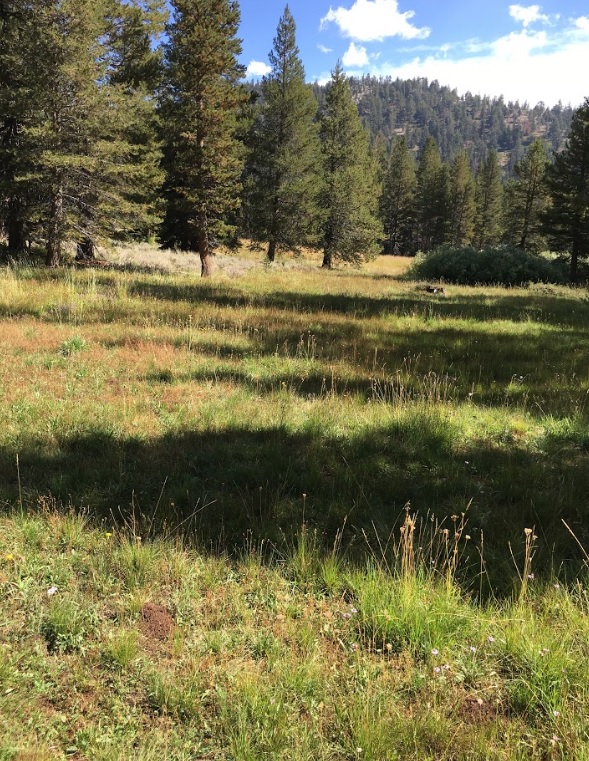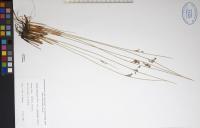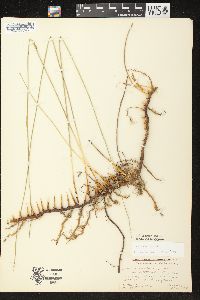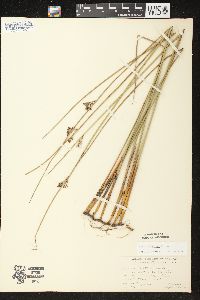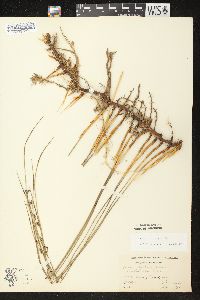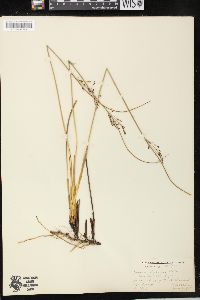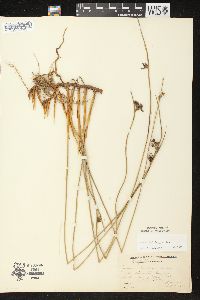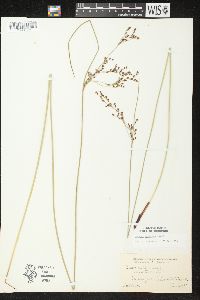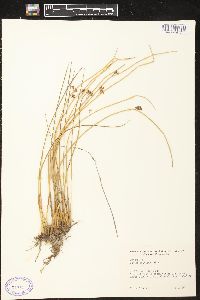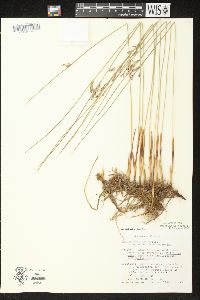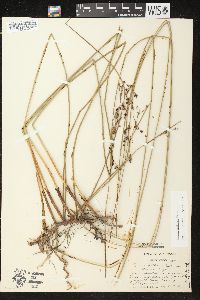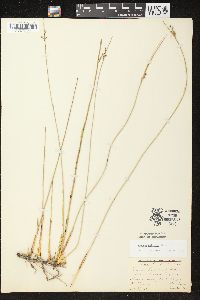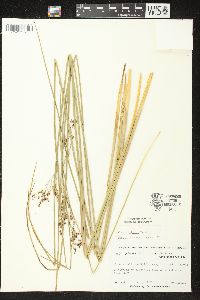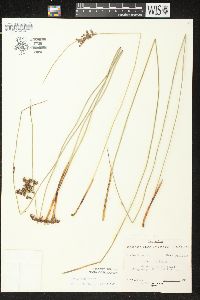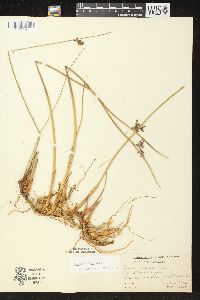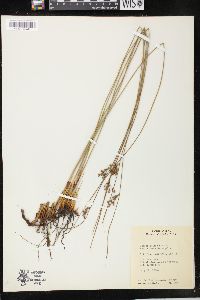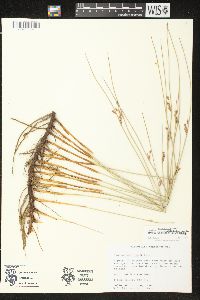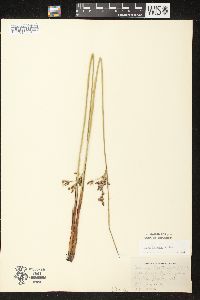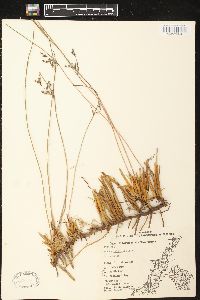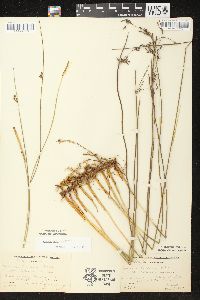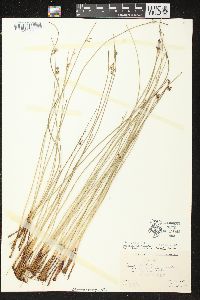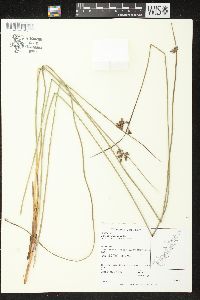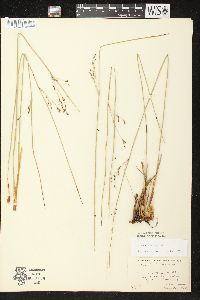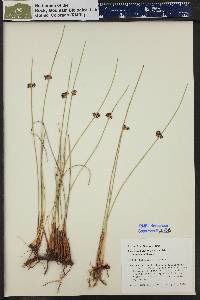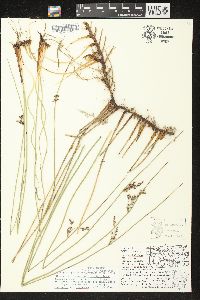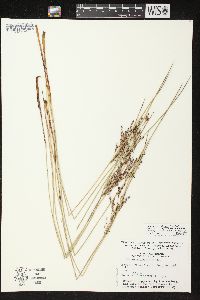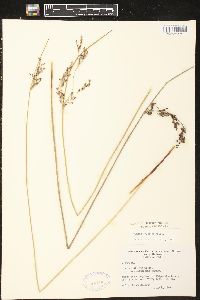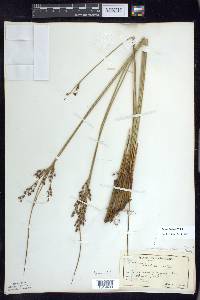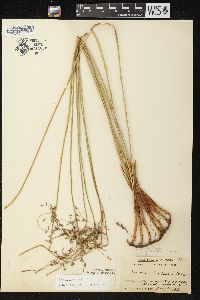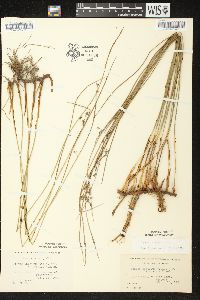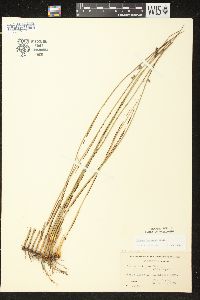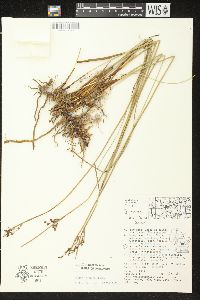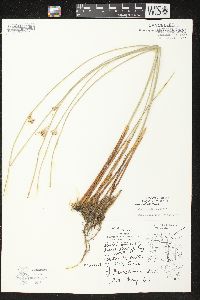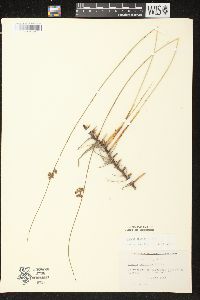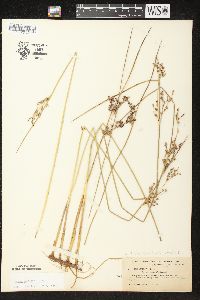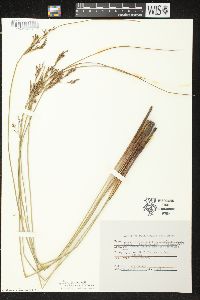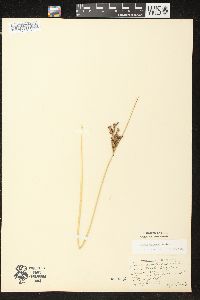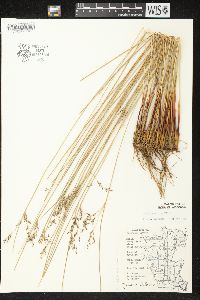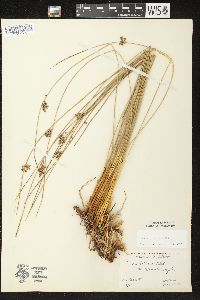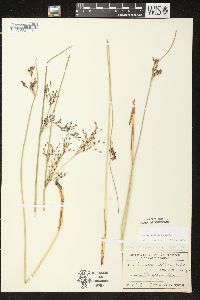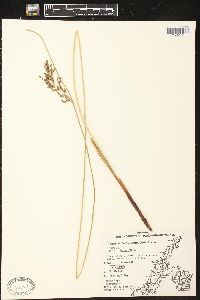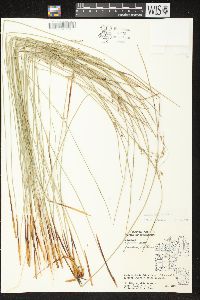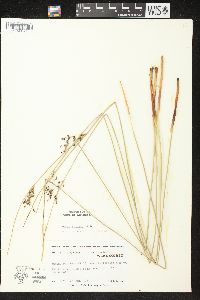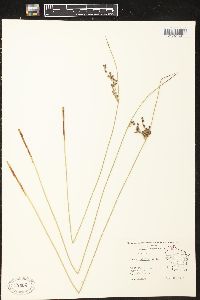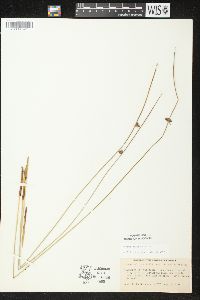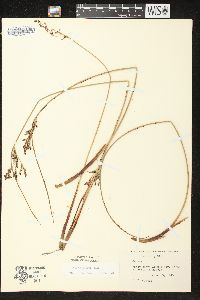Juncus balticus subsp. littoralis
|
Juncus balticus subsp. littoralis (Engelm.) Snogerup
 (redirected from: Juncus balticus var. melanogenus Fernald & Wiegand) (redirected from: Juncus balticus var. melanogenus Fernald & Wiegand) |
|
|
Family: Juncaceae
Baltic rush, more...mountain rush
[Juncus arcticus subsp. littoralis (Engelm.) Hultén, moreJuncus arcticus var. littoralis (Engelm.) B.Boivin, Juncus balticus f. dissitiflorus Engelm. ex Fernald & Wiegand, Juncus balticus var. littoralis Engelm., Juncus balticus var. melanogenus Fernald & Wiegand, Juncus balticus var. stenocarpus Fernald & Buchenau, Juncus balticus var. vallicola Rydb.] |
Perennial grasslike forb 20 cm - 1 m tall Leaves: none apparent since lacking blades (only having sheaths). Inflorescence: a six- to many-flowered, lateral (appears to spring directly from side of stem), loose or congested cluster of branches with each branch ending in a single, stalked, small, radially symmetric flower. The inflorescence is subtended by an erect bract which extends far beyond the inflorescence (several times longer) and appears to be a continuation of the stem. Individual flowers with two, membranous, small bracts (bracteoles) directly below tepals. Stamens: six, with short filaments (0.2 - 0.5 mm) and much longer anthers (1.2 - 2.2 mm). Pistil: with one superior ovary, a 0.9 - 1.5 mm long style, and three stigmas. Fruit: three-chambered, 3.5 - 4.5 mm tall (equal or taller than tepals), oval to narrowly egg-shaped, round-tipped capsules which are loosely subtended by the three inner tepals. Stems: erect, smooth, round in cross section, 1 - 3 mm diameter, and arising at well spaced intervals from persistent, long, creeping, mostly unbranched rhizomes. Seeds: many, dark amber, 0.6 - 0.8 mm long, oval to ellipsoid, with short, abrupt tips, but without distinct narrowed tails at the ends. Tepals: six in two whorls of three, blackish to light brown with translucent edges, 2.5 - 6 mm long (inner three slightly shorter than outer set), lance-shaped with somewhat pointed or more blunt tips. Similar species: Juncus balticus var. littoralis is most easily confused with J. effusus, except that species has clustered or clumped stems on short and densely branched rhizomes, the tepals are lighter brown or more greenish, there are only three stamens, and the anthers about equal the filaments in length. Two other species which occur in northern Michigan (and also have six stamens) are quite similar: Juncus filiformis, which differs by having anthers which are shorter than the filaments; and J. inflexus, which has tufted stems on short, branching rhizomes, as in J. effusus. Flowering: May to late September Habitat and ecology: Localized to particular habitats near Lake Michigan such as shallow dune ponds, pannes, and even the beach. Much less commonly (and quite oddly), it can sometimes be found in some weedy wet ground inland, especially where roads are salted. Occurence in the Chicago region: native Notes: Often the elongate rhizomes with the remnant, short, erect portions of the stems are visible all year long, almost appearing as spines scattered in the sand surface. Technically, the current name for this plant is Juncus arcticus var. balticus, but since this taxon has for so long been known under the species name J. balticus, we have decided to retain it for ease of recognition by local Chicago Region users. According to the treatment of this species complex in the Flora of North America (Brooks and Clemants 2000), there is much variation within Juncus arcticus no matter where it occurs (North America, South America, and Asia), and much more investigation is necessary to gain a clearer understanding of the taxon. Author: The Field Museum From Flora of Indiana (1940) by Charles C. Deam Infrequent in the dune area where it is found on the sandy borders of sloughs and lakes, in interdunal swales and marshes, and in moist depressions of the sandy beach of Lake Michigan. The elongate rootstocks of this rush, and of the following form, usually radiate in many directions from a common center and often attain a length of a yard or even several yards. …… Indiana Coefficient of Conservatism: C = 6 Wetland Indicator Status: OBL |
